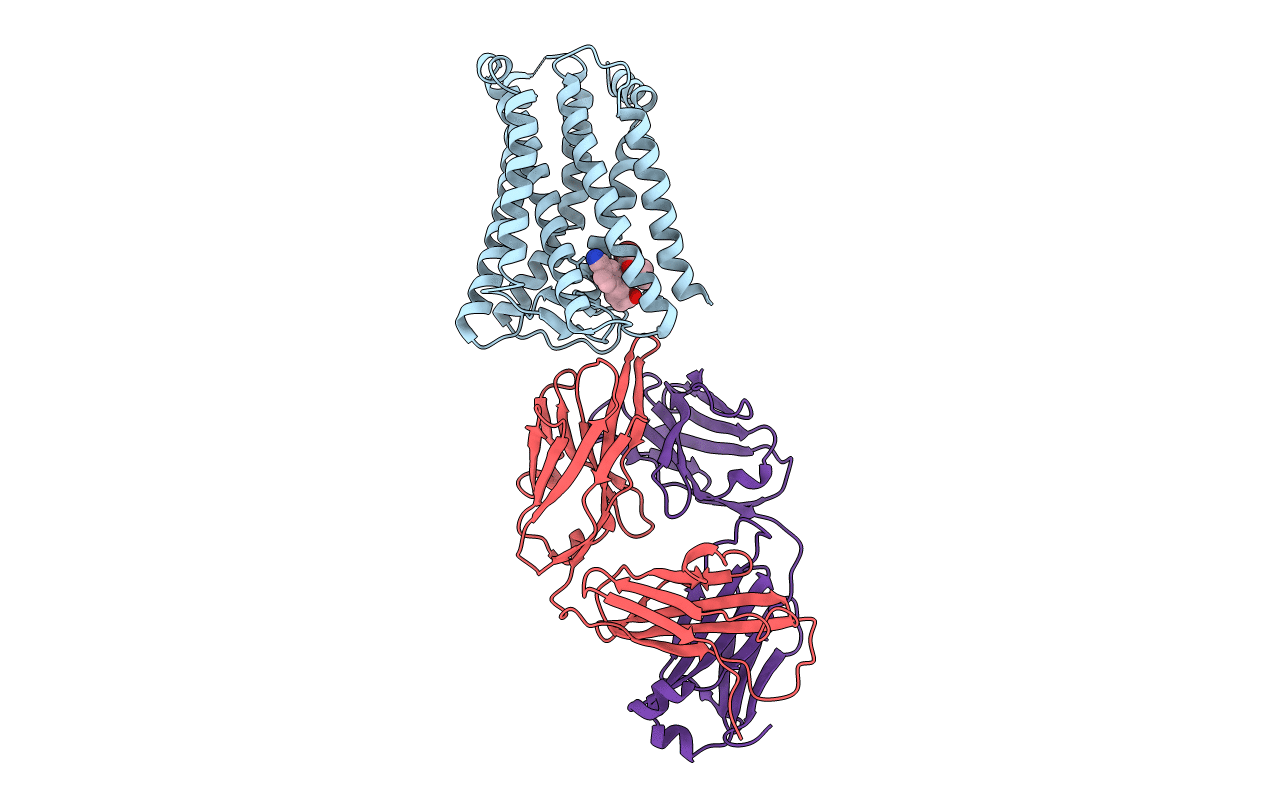
Deposition Date
2017-09-28
Release Date
2018-12-05
Last Version Date
2024-11-06
Entry Detail
PDB ID:
5YHL
Keywords:
Title:
Crystal structure of the human prostaglandin E receptor EP4 in complex with Fab and an antagonist Br-derivative
Biological Source:
Source Organism:
Homo sapiens (Taxon ID: 9606)
Mus musculus (Taxon ID: 10090)
Mus musculus (Taxon ID: 10090)
Host Organism:
Method Details:
Experimental Method:
Resolution:
4.20 Å
R-Value Free:
0.35
R-Value Work:
0.33
R-Value Observed:
0.33
Space Group:
C 2 2 21


